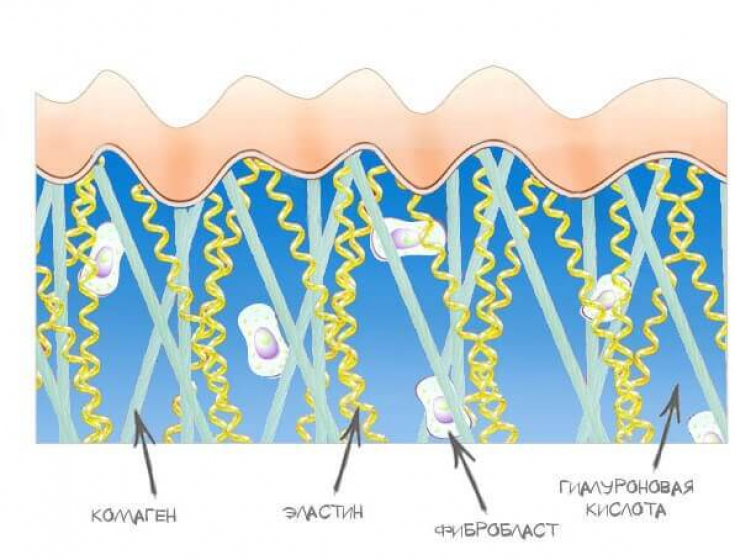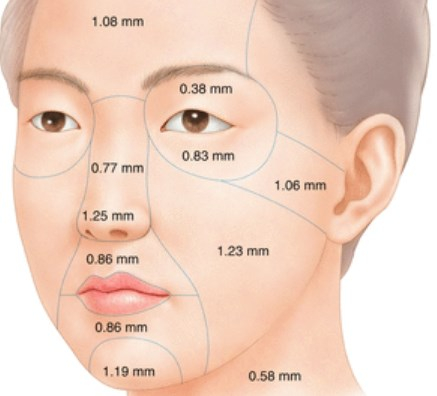Injection correction with fillers is becoming more and more popular every year, as it is a relatively inexpensive, fast and less traumatic way to rejuvenation.
With the growing popularity of these techniques, filler syringes are not always in experienced hands, which entails an increase in the number of complications.
A thorough knowledge of anatomy, the various properties of excipients available, and injection methods is essential to avoid side effects.
It is also of great importance to identify these complications in a timely manner and competently eliminate them without harming the patient.
On estet-portal.com we will discuss the main rules of safe contouring with fillers.
- What properties of the filler may increase the risk of complications of contouring
- Biological properties of hyaluronic acid fillers
- Anatomy: the depth of injection depends on the thickness of the skin
- Safe injection techniques
What properties of the filler may increase the risk of contouring complications
Any contouring procedure can lead to complications that may be related to one of the following factors:
1. Product related: Often these complications are due to the antigenic properties of the material or the lack of biodegradation of the product;
2. Physician related: lack of knowledge, lack of specialist experience;
3. Patient Related: Failure to comply with safety regulations before, after and during the procedure.
Skin disinfection before injection procedures
Let's take a closer look at the products for contouring and see what properties they can cause complications.
All fillers can be divided into 4 categories:
- Temporary and biodegradable products (lasting up to 18 months);
- Semi-permanent and biodegradable products (lasting more than 18 months);
- Permanent and reversible fillers (duration over 24 months);
- Permanent and irreversible (lasting more than 24 months).
Permanent fillers are generally considered to be non-biodegradable and therefore inflammatory complications are more likely to occur with their use.
Fillers are also classified based on histological response as:
- "volumetrics", which elicit a slight cellular response;
- "stimulants" with marked cellular responses.
Knowledge of this property of the excipient may serve as a guide to predict subsequent inflammation or granule formationwe.
First aid for central retinal artery occlusion after filler injections
Biological properties of hyaluronic acid fillers
Understanding the biology of fillers will help avoid complications.
The properties of hyaluronic acid vary depending on crosslinking, gel particle size and concentration.
Extensive crosslinks are thought to increase gel lifespan as they are more resistant to degradation by native hyaluronidase.

Similarly, larger gel particle size has less total area that can be affected by the body and is more likely to resist degradation by hyaluronidase.
The large particle size and increased concentration increase the hydrophilic nature of the product, which leads to increased tissue swelling after the procedure.
Higher concentration, larger particle size and greater crosslinking increase the longevity of the product and theoretically increase the chance of side reactionsth.
Read the most interesting articles in Telegram!
Anatomy: the depth of injection depends on the thickness of the skin
of the treatment area is required for:
correct placement of the filler to avoid lumps, bruises or the Tyndall effect;- exclusion of accidental injection of the filler into the vessel, which can lead to ischemia, necrosis, blindness and other side effects;
- increased product longevity as it stays longer when injected at the recommended depth.
- Injection in the correct plane is important for best results, so it is important to know the differences in skin thickness in different areas of the face.
The thickness of the facial skin
ranges from 0.4mm on the eyelids to 1.2mm on the forehead and cheeks. The outer diameter of the 26-G needle can be used as a rough indicator to determine the depth of injection, as it is 0.45mm, which is half the thickness of the skin.
Thus, for proper
intradermal injection, the needle must be inserted at an angle of approximately 10 °. For
injection into the mid dermisfor correction of medium depth wrinkles, the needle should be inserted at an angle of 30-40 °, and for injection into the deep dermis for correction For deeper wrinkles, the needle should be directed at an angle of 45-90 °.
Warning: Moisturizers can turn skin into Swiss cheeseAreas at increased risk of embolization that lead to blindness are the nose, nasolabial fold, forehead and glabella , while areas prone to necrosis include the glabella, tip of the nose, and lips. Safe injection technique
Dermal fillers may be administered using a
needle or cannulabased on physician experience and comfort, as both methods have their own advantages and disadvantages. In general, fillers should be injected slowly after aspiration, and filler delivery should be done in small volumes per pass and with the least amount of pressure.
The use of small gauge needlesslows down the rate of injection, and the use of blunt cannulas in high risk regions such as the glabella, nose and nasolabial fold reduces the risk of vascular injury. Most important for a safe practice is
a sterile workplaceand strict asepsis during the procedure.
Injection lipolysis algorithm for double chin removal







 Skin thickness in different areas whetherca
Skin thickness in different areas whetherca
Add a comment